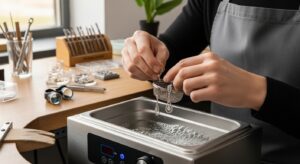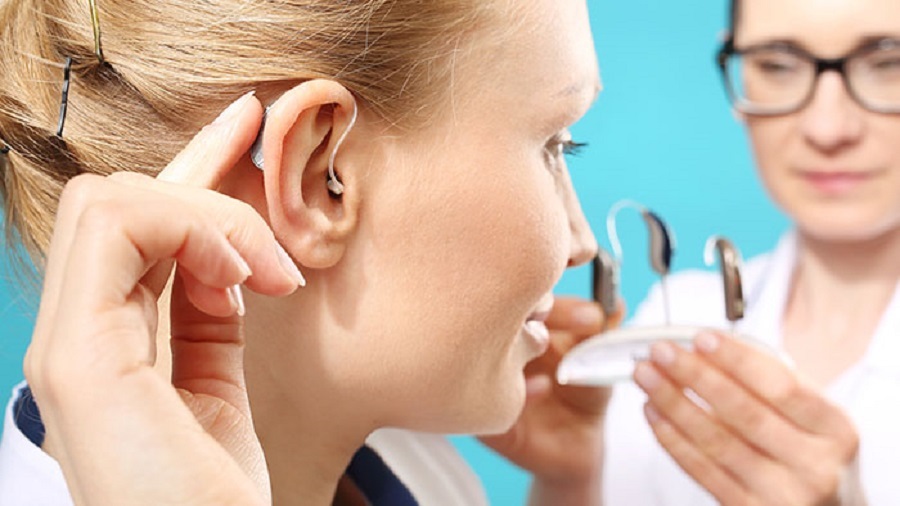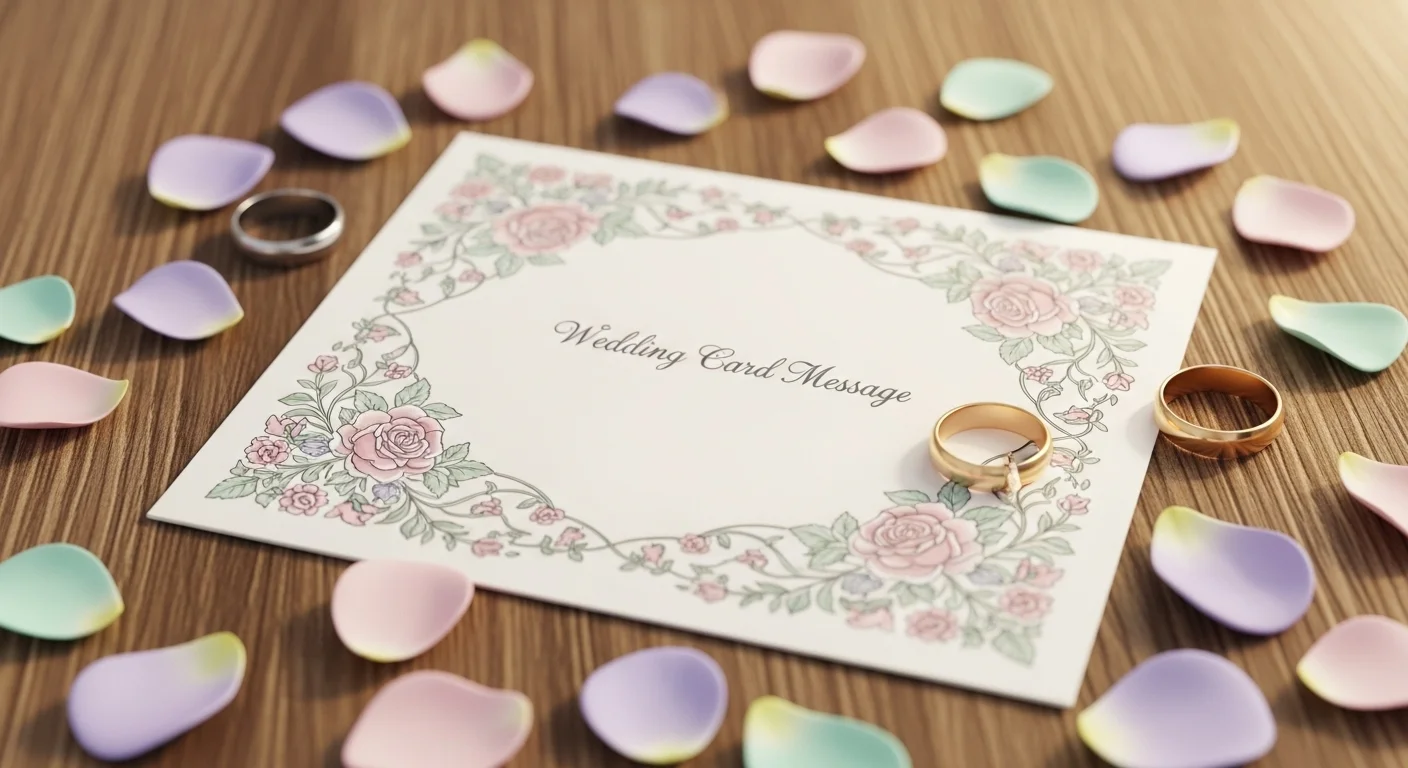Many people wear earrings every day without thinking about the amount of dirt they can collect. Earrings sit close to the skin, touch hair products, absorb oils, and come in contact with makeup. Over time, all of this forms a layer of residue that affects both shine and comfort. Because earrings go directly through a piercing, keeping them clean is not just about beauty but about hygiene as well. If you have ever wondered how do you clean earrings in a safe and effective way, this guide explains everything you need to know.
The goal is simple. You should be able to clean your earrings at home without damaging the metal, scratching stones, or irritating your skin. With the right technique, even old earrings can look new again. So let us explore the best methods, the mistakes you should avoid, and the proper routine for different materials.
Why Earrings Become Dirty Over Time
Earrings collect a surprising amount of residue. Every time they sit in your ears, they absorb moisture, oils, sweat, and even tiny dust particles. When you use hair spray, perfume, or foundation, some of it settles on the earrings, too. This buildup eventually creates a dull surface that makes jewelry lose its shine.
Skin contact also increases the chance of bacterial growth. This is especially noticeable if your skin is sensitive or if your piercing hole gets irritated easily. Understanding this buildup helps you choose a cleaning method that removes dirt gently while keeping your earrings in good shape. People who ask how do you clean earrings usually want a method that removes grime without harming the jewelry.
Essential Cleaning Supplies to Prepare
Earring cleaning becomes much easier when you gather the right supplies beforehand. A few simple items are enough to handle most metals and stones.

- Mild liquid soap
- Warm water
- A soft toothbrush helps reach the corners behind stones or designs.
- Cotton swabs are useful for narrow areas, especially behind earring posts.
- A microfiber cloth is important because it removes water without scratching the surface.
- Rubbing alcohol works well for disinfecting earring posts and backs,
- while hydrogen peroxide can break down stubborn buildup. These supplies are gentle, effective, and safe for home cleaning as long as you use them correctly.
Cleaning Gold Earrings the Correct Way
Gold is a soft and valuable metal. It reacts well to gentle cleaning, but it should never be scrubbed aggressively. The safest approach begins with soaking the earrings in warm water mixed with mild soap. This softens the residue and allows you to clean without scratching the gold.
After soaking, you can use a soft toothbrush to clean behind the curves and around the posts. The goal is to loosen dirt, not to press hard. Once you rinse the earrings, dry them carefully using a microfiber cloth. If your gold earrings include diamonds or other stones, gentle brushing helps restore sparkle without damaging the setting.
How to Clean Tarnished Silver Earrings
Silver is beautiful but also prone to tarnish. Tarnish forms when silver reacts with air and moisture, creating a dark layer on the surface. Fortunately, removing tarnish at home is easy when done correctly.

A simple paste made from baking soda and water works well. You can apply the paste with a soft cloth and polish the earrings gently until the shine returns. If the tarnish is heavier, use a warm water and baking soda bath lined with aluminum foil. This chemical reaction lifts tarnish without harming the silver. After cleaning, drying the earrings thoroughly prevents new tarnish from appearing too quickly.
Restoring Shine to Diamond Earrings
Diamonds lose shine because of oil buildup. Even a small amount of skin oil or lotion can dull their sparkle. Soaking diamond earrings in warm water mixed with liquid soap loosens this buildup. A soft toothbrush helps clean around the diamond where dirt often hides.
Because diamonds are extremely strong, the brushing process is safe. However, you should pay attention to the metal setting. If the earrings are old or have a delicate structure, handle them gently to avoid loosening the stone.
Cleaning Earrings with Different Gemstones
Gemstones add beauty to earrings, but they vary in structure. Some stones are porous while others are non-porous. This difference affects how you should clean them.
Porous stones like opal, pearl, coral, and turquoise absorb liquid easily. They should never be soaked. Instead, a soft cloth dampened with mild soapy water is enough. Non-porous stones such as ruby, sapphire, emerald, and amethyst can handle gentle brushing and rinsing. Taking the time to understand your gemstone ensures long-lasting shine and avoids accidental damage.

How to Care for Earrings if You Have Sensitive Ears
People with sensitive ears often face irritation, itching, or redness caused by bacteria or nickel exposure. This makes regular cleaning very important. Cleaning the earring posts with rubbing alcohol helps remove bacteria. A saline solution works well for cleaning the skin around the piercing.
Choosing hypoallergenic materials such as surgical steel, titanium, or gold helps reduce irritation. When people with sensitive ears ask how to clean earrings safely, the answer includes cleaning both the jewelry and the skin around the piercing.
Why Cleaning Earring Backs Matters
Earring backs are small, but they collect the highest amount of dirt because they stay tightly pressed against the skin. If not cleaned properly, they can trap bacteria and cause painful swelling or clogged pores.
Cleaning earring backs is simple. Soaking them in warm, soapy water loosens the residue. Brushing them lightly and drying them completely ensures that no moisture remains. Taking a moment to clean the backs every time you clean the earrings keeps your piercing healthier.
How Often You Should Clean Your Earrings
The cleaning frequency depends on how often you wear your earrings. Daily earrings need weekly cleaning to stay hygienic. Earrings worn occasionally can be cleaned every two or three weeks. New piercings require daily cleaning until the piercing heals completely. When you build a routine, you extend the life of your jewelry and protect your skin from irritation.
Mistakes to Avoid While Cleaning Earrings
Many people accidentally damage their earrings by using the wrong cleaning products. Toothpaste may look harmless, but it can scratch soft metals. Bleach weakens metals and damages stones. Boiling earrings is also risky because it can loosen stones and warp delicate settings.
Another common mistake is storing earrings without drying them. Moisture encourages bacteria and tarnish. Taking a few minutes to clean earrings properly prevents long-term damage and keeps them looking new.
Simple DIY Cleaning Solutions to Try at Home
Most earrings can be cleaned with basic household items. Warm water mixed with mild soap works for almost all materials. Saltwater is suitable for disinfecting new piercings. Rubbing alcohol is effective for earring posts and backs. Hydrogen peroxide helps remove stubborn buildup around metal surfaces. These solutions are safe when used correctly and make home cleaning convenient.
When to Get Professional Cleaning
Some earrings require professional care. If a stone appears loose or the metal setting seems bent, a jeweler can safely repair it. Professional jewelers also use ultrasonic cleaners that remove dirt from deep areas without harming the jewelry. Visiting a jeweler once or twice a year keeps your earrings in excellent condition.

Conclusion
Understanding how to clean earrings helps protect your jewelry, maintain hygiene, and ensure comfort while wearing them. When you follow the right cleaning methods, your earrings stay bright, clean, and safe for everyday use. With this guide, you now know how to handle different metals, stones, and sensitivity levels. By taking care of your earrings regularly, you protect both your jewelry and your skin, and you always enjoy the fresh shine that clean earrings bring.
FAQs
1. How can I store my earrings to prevent them from tarnishing?
You can reduce tarnishing by keeping your earrings in a dry, airtight container. Soft pouches, anti-tarnish strips, and lined jewelry boxes also help protect the metal.
2. Can I use an ultrasonic cleaner for all types of earrings?
Ultrasonic cleaners work well for durable stones like diamonds, sapphires, and rubies, but they are not safe for porous or delicate stones such as opal, pearl, turquoise, and coral.
3. How often should professional cleaning be done for fine jewelry?
Fine jewelry benefits from professional cleaning once or twice a year. This helps maintain shine, strengthens the setting, and prevents long-term wear.
4. What is the safest way to clean earrings with sensitive metals?
Sensitive metals like sterling silver, surgical steel, and titanium should be cleaned with mild soap and water. Harsh chemicals can damage the surface, so gentle cleaning is always the safest option.
5. Do new piercings require a different cleaning routine?
Yes, new piercings need daily cleaning until they heal completely. A saline solution is usually recommended because it cleans the piercing without causing irritation.























Leave a Reply